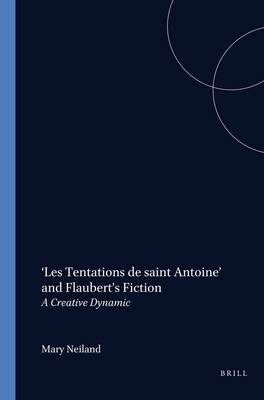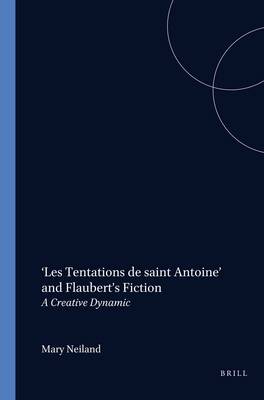
- Afhalen na 1 uur in een winkel met voorraad
- Gratis thuislevering in België vanaf € 30
- Ruim aanbod met 7 miljoen producten
- Afhalen na 1 uur in een winkel met voorraad
- Gratis thuislevering in België vanaf € 30
- Ruim aanbod met 7 miljoen producten
Zoeken
€ 93,45
+ 186 punten
Omschrijving
This book reveals the extensive and dynamic interplay between Les Tentations de saint Antoine and the rest of Flaubert's fiction. Mary Neiland combines two critical approaches, genetic and intertextual criticism, in order to trace the development of selected topoi and figures across the three versions of La Tentation and on through Flaubert's other major works. Each chapter is devoted to one of these centres of interest, namely, the banquet scene, the cityscape, the crowd, the seductive female and the Devil. Detailed study of these five areas exposes a remarkable intimacy between writings that appear at a far remove from each other. The networks of recurring images located demonstrate for the first time the obsessive nature of Flaubert's writing practice; the pursuit of these networks across his fictional writings exposes his developing technique; and La Tentation is revealed as both a privileged moment of expression and as a place of auto-reflection.
This volume will be of interest to students and specialists of Flaubert as well as to those interested in genetic and intertextual criticism.
This volume will be of interest to students and specialists of Flaubert as well as to those interested in genetic and intertextual criticism.
Specificaties
Betrokkenen
- Auteur(s):
- Uitgeverij:
Inhoud
- Aantal bladzijden:
- 204
- Taal:
- Engels
- Reeks:
- Reeksnummer:
- nr. 204
Eigenschappen
- Productcode (EAN):
- 9789042013452
- Verschijningsdatum:
- 1/01/2001
- Uitvoering:
- Paperback
- Formaat:
- Trade paperback (VS)
- Afmetingen:
- 150 mm x 220 mm

Alleen bij Standaard Boekhandel
+ 186 punten op je klantenkaart van Standaard Boekhandel
Beoordelingen
We publiceren alleen reviews die voldoen aan de voorwaarden voor reviews. Bekijk onze voorwaarden voor reviews.








